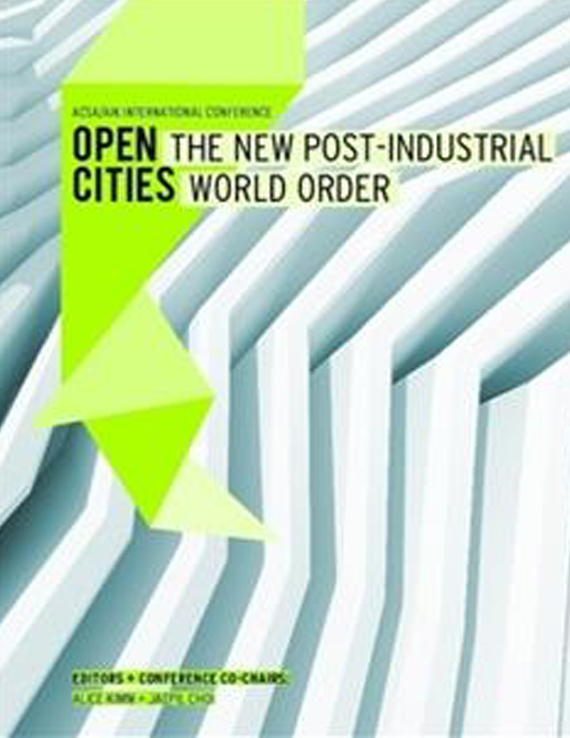Author(s): Michael Everts
Architects don’t know the future, they design it. Fundamental to this ability are understandingsof causality, probability, change agents, systems of power, and visualizationskills that analyze and predict probable futures. This paper presents a newinteractive parametric predictive diagram for programming. It is a tool for enrichingspatial arrangements and uses, not optimizing them such as deductive-logic programmingmatrixes do. The diagram is demonstrated in the programming phase ofa community engagement service-learning project for a non-profit organization thatprovides therapeutic recreational opportunities for people with disabilities.Human resources and their well-being is a critical component in the performanceof a client’s business plan. The successful use of resources is in direct service to themission of an organization. Human resources, infrastructure and mission are thecontexts of program. Designed creatively, programs can positively feedback intoresources and institutional goals by morphing into activities that reinterpret andactively engage context. The capacity of a program to do this, however, relies onanalyzing new relational possibilities. Seeing human resources as only employeesin a leaned space excludes possibilities of customer participation in an offered servicethat in turn, expands the space of interaction into the community and consequentlynetworks the mission. Semiotic squares are analysis tools that identify theparadigms that underlie typical relationships. They use a strategy of consideringopposite connotations of paired concepts to create an expanded “field” of meaning.Traditionally, they have been used as 2D diagrams for deconstructing texts.They demonstrate that something doesn’t have to be “one or the other”; it canexist at a distance between one and the other.The new analysis diagram uses semiotic squares to register the performance of aprogram on three levels: human resources, infrastructure and mission. An interactiveequation, within the diagram, uses numeric sliders to dynamically rate theperformance on each level. The ratings show up as ellipses defining areas of probableperformance. The human resources and infrastructure categories are placedon top and bottom, creating a 3D reference area for the mission-to-program performanceto be visualized in. The interactive controls can adjust the height andpitch/yaw of the center visualization, giving control to how the three levels relate.A sinuously shaped surface links the rated metrics for resources, space and use.It can be animated over time (4D) to test evolutionary developments of program.As a communication and discovery tool, the diagram can be rotated to the side tosee one set of relationships, the top view for another and as an isometric view foreven more advanced understandings of program.The move to a service society has shifted the attention of architectural clients fromthe complexities of physical space to the complexities of abstract structures invirtual space. Focus on the development of social networking and computer programsleaves in its wake a growing inattention to spatial quality, programmaticcombinations and infrastructure. Turning predictive technologies back on theconditions that bore them can prompt more advanced architectural services anddesign directions.
Volume Editors
Alice Kimm & Jaepil Choi
ISBN
978-0-935502-91-6

 Study Architecture
Study Architecture  ProPEL
ProPEL 
